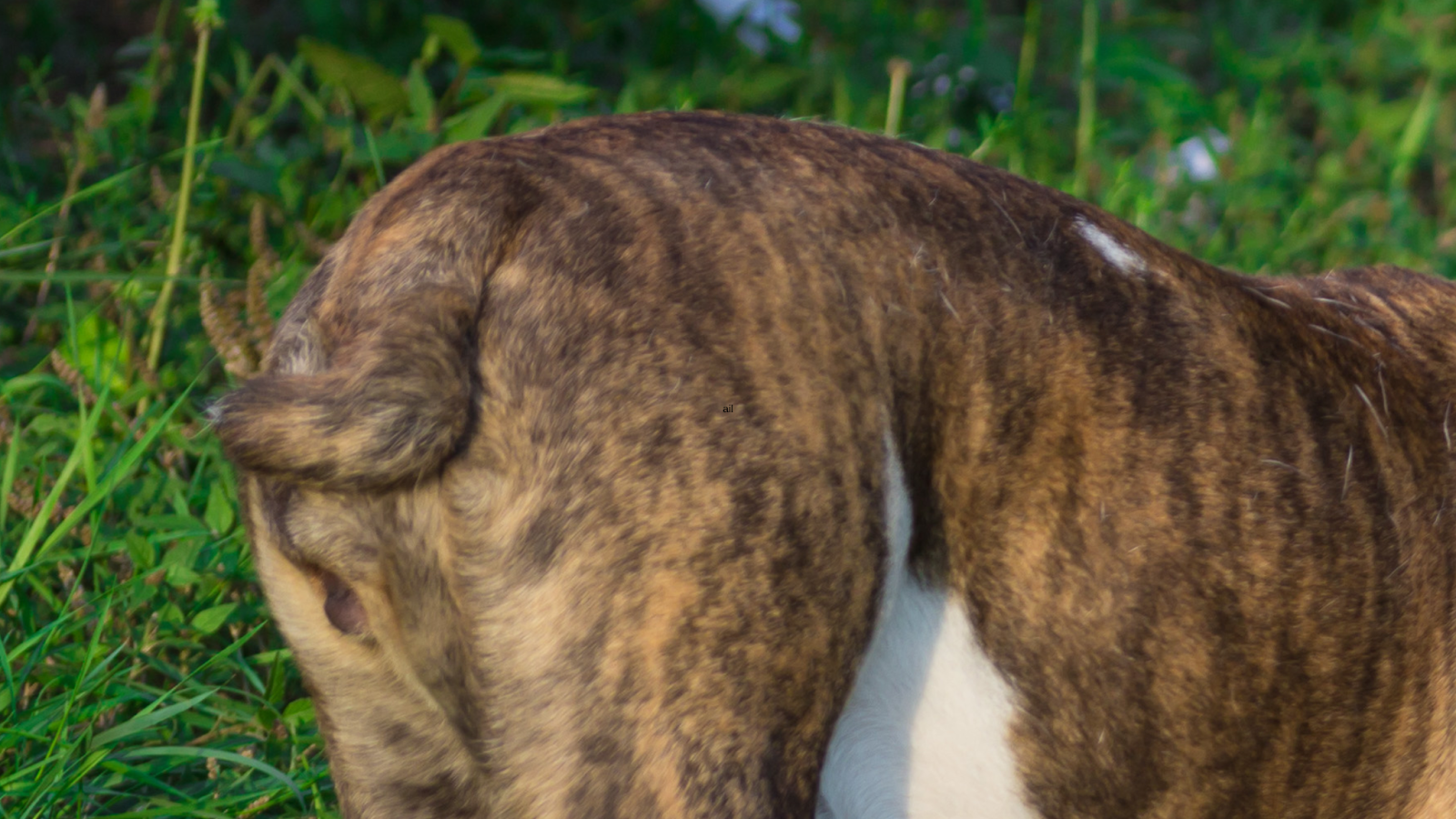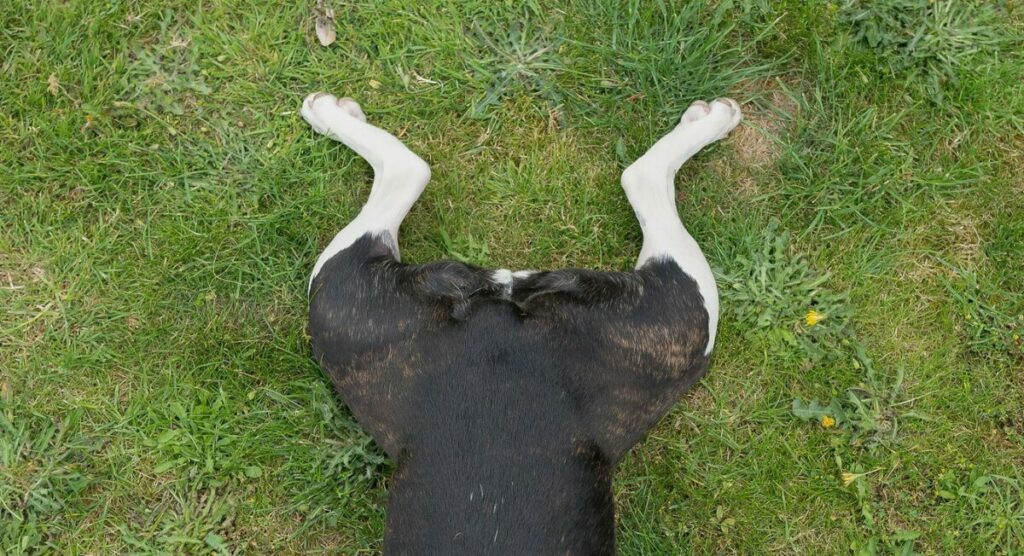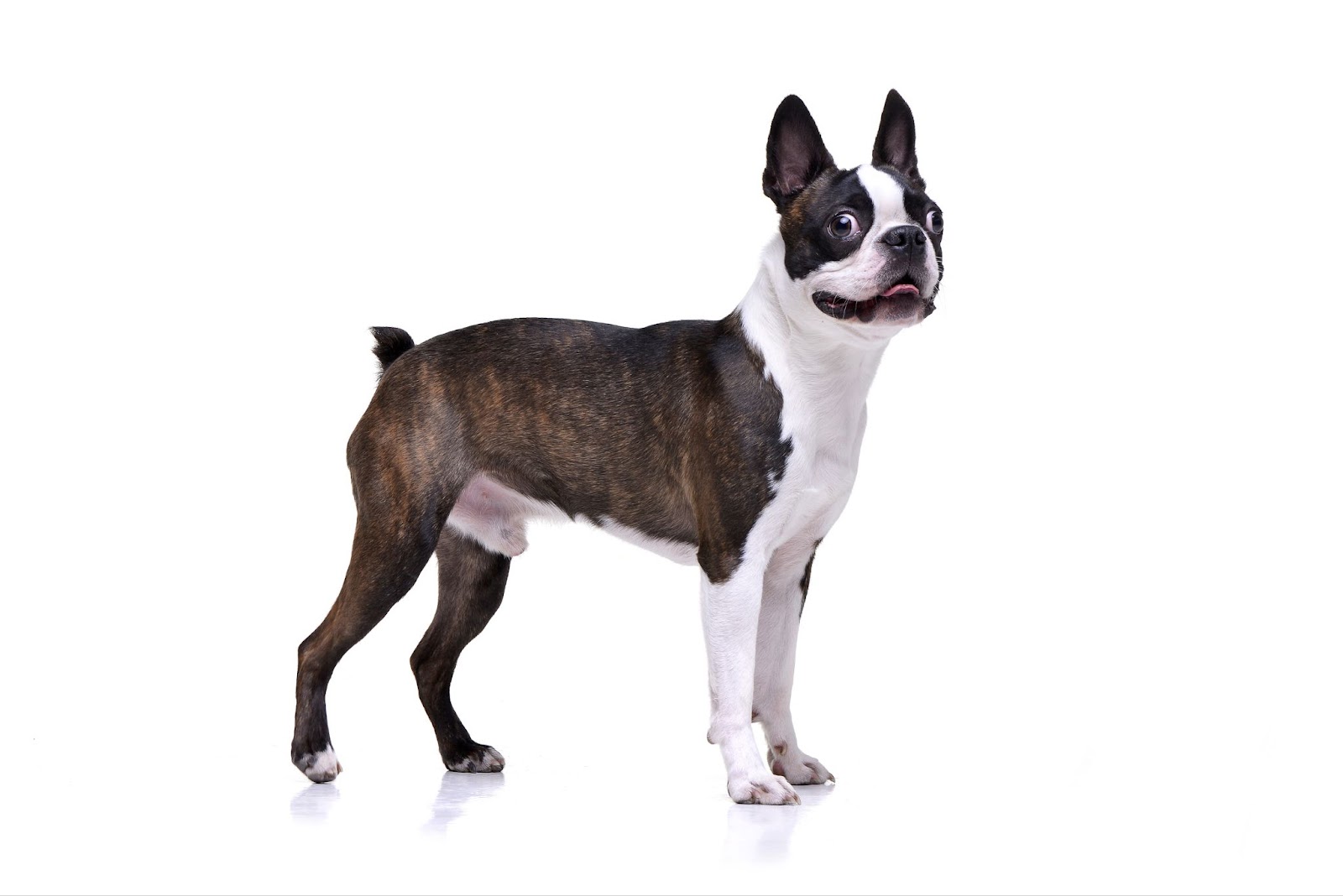Boston Terriers are a beloved dog breed, well-known for their friendly demeanor and unique physical characteristics. One of their most distinctive features is their tail. You might be curious about the various types and styles of Boston Terrier tails. Typically, these tails come in several shapes and sizes, often described as straight, corkscrew, or short and stumpy. Each tail tells a story of genetics and breed history that adds to the dog’s charm.
Interesting research has been conducted into the genetics that dictate these tail types. Dr. Julia Niskanen has played a notable role in this field. Her work has helped shed light on the genetic factors that result in the iconic tail structure of Boston Terriers. Understanding these genetic influences is not only fascinating for breed enthusiasts but also important for the health and well-being of these dogs.
The tail of a Boston Terrier is more than just a cute wiggle. It carries genetic information that can influence their overall health. Professionals in the field have studied the Wnt pathway gene linked to the breed’s characteristic tail and its connection to the overall body structure. As you explore the world of Boston Terriers and their endearing tails, you’ll discover there’s much more to these tails than meets the eye.
So, What Kind of Tails Do Boston Terriers have?
Boston Terriers have short tails, varying from screw, straight, to corkscrew shapes, typically no longer than two inches, conforming to breed standards without docking. These tails are a natural, distinctive feature, reflecting the breed’s genetics and physical characteristics.
Let’s dive in deeper and understand the different styles and kinds of tails you will find on a Boston Terrier.
Boston Terrier Tail Overview

When you’re looking at a Boston Terrier, one of the breed’s distinctive features is its tail. Understanding the tail’s characteristics gives insight into the breed’s history and genetics, which have been carefully shaped by breed standards.
Breed History
The Boston Terrier’s tail is a physical trait that has evolved over time. Historically, the tail has served as an identifier of the breed’s class and style. It’s a reflection of meticulous selective breeding for specific traits that conform to the breed standard. According to the American Kennel Club’s breed standards, the Boston Terrier’s tail is set low, short, fine, and tapering. It can be straight or screw-shaped but is not meant to curl above the horizontal line.
Tail Genetics and Breeding Standards
The genetics behind the Boston Terrier’s tail involve a gene variation in the Wnt pathway gene DVL2, which is associated with the distinctive screw tail seen in some terriers. This variation can lead to a truncated and kinked tail, a trait shared amongst breeds with “bulldog type” morphology.
In line with breeding standards, the preferable tail length is no more than one-quarter the distance from set-on to hock. It is crucial that during breeding, attention is given to these genetic markers to ensure the health and functionality of the Boston Terriers. Adherence to these genetic standards helps to prevent health issues that can arise from genetic variations that affect the tail and other body structures.
Boston Terrier breed standards are essential for maintaining the dog’s quality of life and appearance. For further details on the breed specifications, reviewing the breed standard document is a helpful source of information.
Types of Boston Terrier Tails
Boston Terriers are known for their distinct tail types, which add to their characteristic appearance. You might notice that these tails vary in length and shape, but each one is a natural part of the Boston Terrier’s genetics.
Bobbed Tail

A Bobbed Tail is quite short and may seem like it’s missing. This is a natural look for some Boston Terriers and doesn’t affect their happiness or tail-wagging ability.
Corkscrew Tail

The Corkscrew Tail looks just like it sounds. It curls up like a little pig’s tail. This tail style is quite distinctive and easily spotted when your Boston Terrier scampers around.
Straight Tail

A Straight Tail is just that – straight. It extends directly from the base, and you’ll see that it complements their sleek body line. This type of tail is strong and helps these dogs display their feelings clearly.
Crooked Tail

Some Boston Terriers have what’s known as a Crooked Tail. It may bend to one side or have a slight curve. This unique tail shape doesn’t affect their overall health.
Gay Tail
Lastly, a Gay Tail stands upright and may even curl over the back. It’s not about mood, but this tail type does often stick up when your pup is excited or alert.
Do note that each tail type is a natural aspect of Boston Terriers’ genetic makeup. Whether your Boston Terrier’s tail is bobbed, corkscrew, straight, crooked, or gay, it’s just one of the many features that make them unique. Remember, these tail types don’t require special care, and they all contribute to your Boston Terrier’s lively personality.
Is A Boston Terrier Tail Docked?
When you think about a Boston Terrier’s tail, you might wonder if it’s naturally short or if it has been docked. Docking is when a dog’s tail is trimmed or cut short after birth. With Boston Terriers, you don’t have to worry about that, because their tails are naturally short or bobbed. That’s right, your Boston Terrier was born with that cute little tail!
Most Boston Terriers have short tails due to their genetics, not because of docking. Some tails might be just a nub, while others are slightly longer and curve over the back. Here’s a simple breakdown:
- Short & Stubby – Just a nub that doesn’t wag much.
- Screw or Corkscrew – It looks like it twists but doesn’t really curl.
- Straight but Short – Straight like a pencil but still quite short.
You might hear stories or see older pictures of Boston Terriers with longer tails, but that’s not the norm anymore. Through selective breeding, the short tail has become a breed standard – it’s what makes a Boston Terrier look like, well, a Boston Terrier.
Remember, it’s important to know your breed’s history and standards, and for Boston Terriers, docking is simply not part of their story. If you ever come across a Boston Terrier with a very short tail, you can feel confident knowing that it’s all natural. Isn’t it nice to learn that your furry friend has stayed true to its roots?
Can a Boston Terrier Have A Long Tail?
Boston Terriers typically do not have long tails. A long tail would be unusual for a Boston Terrier and not in line with the breed’s standard characteristics. However, it is possible for a purebred dog to be born with a longer tail than the breed standard usually allows.
Tail Characteristics and Standards
When you look at a Boston Terrier, its small tail is a distinctive feature that adheres to specific breed standards. Let’s explore the length, shape, and color patterns that make their tails unique.
Length and Shape
Boston Terriers have short tails that are naturally short, without the need for docking.
- Straight: Some tails are straight and fine.
- Corkscrew: Others may have a little twist, known as a corkscrew tail.
These tails typically measure just about one-quarter of a square in length, but they can also be quite short, sometimes barely covering the dog’s rear. However, length can vary among individual dogs.
Color and Patterns
Your Boston Terrier’s tail color should match their coat.
- Brindle: A mixture of black with red or brown.
- Black & White: A classic and well-known Boston Terrier pattern.
- Seal & White: This unique color looks black but has a reddish tint in the sunlight.
Patterns of color on Boston Terrier tails are less varied than coat patterns, but still adhere to the bold and clear coloration standards set by breed enthusiasts and kennel clubs. Ensure that the tail’s color blends seamlessly with the overall coat pattern for a cohesive look.
Health and Tail-Related Issues
In Boston Terriers, paying attention to the tail is crucial, as certain issues like ingrown tails can cause discomfort and require surgical intervention. Knowing what to watch for and how to care for your dog’s tail can prevent complications.
Common Tail Health Problems
The ingrown tail is a condition seen in Boston Terriers, where a genetic malformation causes the tail to curl tightly, leading to chronic issues such as skin fold inflammation and infection. The discomfort and pain resulting from this condition can significantly affect your pet’s quality of life. Due to complex anatomy, medical treatments often fall short, with caudectomy — partial or complete tail amputation — being the suggested approach for long-term relief. Surgical intervention should be handled by a professional to reduce risks and preserve surrounding vital structures.
Boston Terriers might also experience other tail-related conditions like skin infections or trauma to the tail due to its distinctive shape and style. Regular monitoring of your dog’s tail area is essential to catch any problems early on.
Prevention and Care
- Regular Cleaning: To prevent infections in areas around the tail, clean the skin folds regularly.
- Observation: Regularly check for signs of swelling, redness, or discomfort around the tail area to catch issues early.
- Veterinary Visits: Schedule check-ups with your vet to ensure proper tail health, especially if you notice any changes or progression in your dog’s tail appearance or behavior.
- Post-Surgical Care: If caudectomy is performed, adhere closely to your vet’s post-operative care instructions to enhance healing and comfort while minimizing complications.
By applying these preventive measures and providing attentive care, you can help maintain your Boston Terrier’s tail health and overall well-being.
Tail Care and Grooming
Your Boston Terrier’s tail is a distinctive feature that requires regular care to keep it in top condition. By understanding the proper grooming techniques and using the right tools and products, you can ensure your pet’s tail looks its best.
Grooming Techniques
Brushing
Regular brushing keeps your Boston Terrier’s tail clean and free of tangles. Use a soft-bristled brush to gently go over the tail, following the direction of the hair growth.
Trimming
If your Boston Terrier has longer hair on its tail, occasional trimming can help maintain the desired style. Use rounded-tip scissors and carefully snip away any excess length, being careful not to cut too close to the tail itself.
Tools and Products
Brushes
- Soft-bristled brush for gentle brushing; and
- Pin brush for detangling (if necessary).
Scissors
- Rounded-tip scissors for safe trimming
Shampoo and Conditioners
Choose mild, dog-specific products to wash your Boston Terrier’s tail during baths. A hypoallergenic shampoo can be helpful if your dog has sensitive skin.
Showing and Competition Guidelines
When you enter your Boston Terrier in a show, you’re stepping into a world with specific guidelines and expectations, especially regarding tails. Judges will look closely at your dog’s tail to ensure it meets the breed standards.
Conformation Shows
In conformation shows, your Boston Terrier is judged against the breed standard set by kennel clubs such as the American Kennel Club (AKC). The tail is one aspect of the overall assessment. Here’s what you should know:
- Length: The ideal tail length is short, no longer than a quarter of the distance from the tail set to the hock.
- Shape: The tail can be straight or “screw-shaped”, but it should not curve over the back or have any sideways deviation.
Make sure your dog’s tail looks natural and is free of any alterations, as these can disqualify your Boston Terrier.
Tail Standards in Competitions
Tail standards in competitions are precise and are often the deciding factor in tight contests. Here’s how your Boston Terrier’s tail will be evaluated:
- Carriage: The tail should be carried low and not above the level of the back.
- Faults: Any signs of tail docking can severely impact your dog’s ranking. Naturalness is key, so tails that are too long, too short, or improperly carried may hurt your score.
Remember, the tail is an important label of breed conformity, and adherence to standards is paramount in competitions.
Frequently Asked Questions (FAQs)
In this section, you’ll find answers to common questions about Boston Terrier tails, from potential problems to what a healthy tail should look like.
What are the common problems that can occur with Boston Terrier tails?
Your Boston Terrier’s tail might face issues like infections, injuries, or congenital problems such as hemivertebrae, which could affect the tail structure.
Can Boston Terriers have long tails, or are they usually short?
Boston Terriers are usually recognized by their short tails, which are often no longer than a few inches. A long tail is quite rare and not typical for the breed.
What does a healthy Boston Terrier tail look like?
A healthy tail is generally short, straight or slightly curved with a fine coat of hair, and is free of sores, redness, or any unpleasant odors.
How can you tell if a Boston Terrier has a screw tail?
A screw tail is visibly curled or twisted rather than straight. You might notice it curling in a spiral, which is common in some Boston Terriers.
What’s the normal appearance for a purebred Boston Terrier’s tail?
For a purebred, the tail is usually short, not exceeding a few inches, and can be straight or slightly curved. It shouldn’t be carried above the horizontal.
How do you treat a Boston Terrier’s tail if it gets infected?
If the tail gets infected, you should clean the area gently and see your vet as soon as possible for appropriate medication and advice on further care.
Final Thoughts
When you’re considering a Boston Terrier for your family, their unique tail is something you might notice. You’ll see that Boston Terrier tails are short due to genetics, and there are a few different types or styles that are common:
- Screw-shaped: This type curls a bit and is quite short.
- Straight and short: Some are just little stubs without a curve.
- Crooked: Occasionally, you might see one with a kink or a bend.
It’s important to know that these tails are natural and not a result of docking, which is a practice that’s discouraged by animal welfare organizations and is illegal in many places for cosmetic reasons.
You may be curious if their tail affects their ability to communicate, but don’t worry. Boston Terriers are expressive in many ways – through their big, bright eyes, perky ears, and joyful body language.
Remember, each Boston Terrier’s tail is as unique as their personality, and it won’t be long before you understand what your dog’s little tail wags mean. Embrace these features and choose a Boston Terrier not just for their appearance, but for their loving and spunky character. They’ll surely wiggle their way into your heart, short tail and all!

